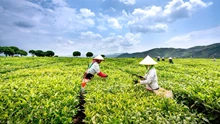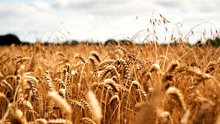
Stevia is perhaps unique among food ingredients because it's most valued for what it doesn't do. It doesn't add calories. Unlike other sugar substitutes, stevia is derived from a plant.
The stevia plant is part of the Asteraceae family, related to the daisy and ragweed. Several stevia species called candyleaf are native to New Mexico, Arizona and Texas.
But the prized species, Stevia rebaudiana (Bertoni), grows in Paraguay and Brazil, where people have used leaves from the stevia bush to sweeten food for hundreds of years.
PureCircle has expanded the production of its zero-calorie Reb D and Reb M stevia sweeteners after developing two new production methods.

PureCircle claims that the Reb D and Reb M sweeteners have the most ‘sugar-like’ taste of any stevia-derived sweeteners, but the two strains are only available in small amounts in conventional stevia plants.
The manufacturer claims it has found a new method of developing both Reb D and Reb M from the more abundant Reb A strain during the stevia production process, allowing PureCircle to produce greater quantities of the sweeteners for clients in the food and beverage industries.
Both variants are classified as non-GMO and have been GRAS (generally recognised as safe) certified by the US Food and Drug Administration, meaning the zero-calorie sweeteners are suitable for use in food and drink products for the US market.

PureCircle, the world’s leading producer and innovator of stevia ingredients for the global beverage and food industry, has announced the successful production of the first stevia leaf extract from the new, breakthrough, proprietary stevia leaf – StarLeaf™ stevia.
StarLeaf stevia contains over 20 times more sugar-like steviol glycoside content compared to standard stevia leaf varieties. The extract from this non-GMO proprietary leaf variety provides beverage and food developers a plant-based, zero-calorie sweetener to produce finished products with more upfront sweetness, no bitter linger and a sugar-like taste.
Based on this successful production, PureCircle has expanded this variety to commercial scale and will plant it in thousands of hectares. When these plants are harvested, customers will benefit from increased availability of these sugar-like glycosides. This new variety will support developers in achieving deeper levels of sugar reduction in their final products without sacrificing taste.

The StarLeaf stevia leaf is a product of the company’s long term investment of $100 million in its PureCircle Stevia Agronomy Program, announced last year. This program has a history of providing agricultural breakthroughs in stevia development. The Program supports PureCircle’s goal of creating the world’s largest, non-GMO stevia supply from plant to ingredient, to meet the demands of the global food and beverage industry.
Commenting on the planting of StarLeaf stevia for commercial production, James Foxton, Vice President of Agricultural Operations, says: “This leaf is the result of our significant investment in agronomic research, and we are delighted to plant for the commercial production of StarLeaf stevia extract. We work tirelessly with our customers to achieve deeper sugar reductions to maintain the great taste of their products. StarLeaf stevia will significantly support those efforts. The steviol glycosides in StarLeaf stevia are the most sought because they taste so similar to sugar. We are proud to be the first in the industry to naturally increase the supply of these steviol glycosides in this way.”
StarLeaf stevia is pollinated by PureCircle’s thousands of bees, which are integral to the growth and development of StarLeaf stevia












